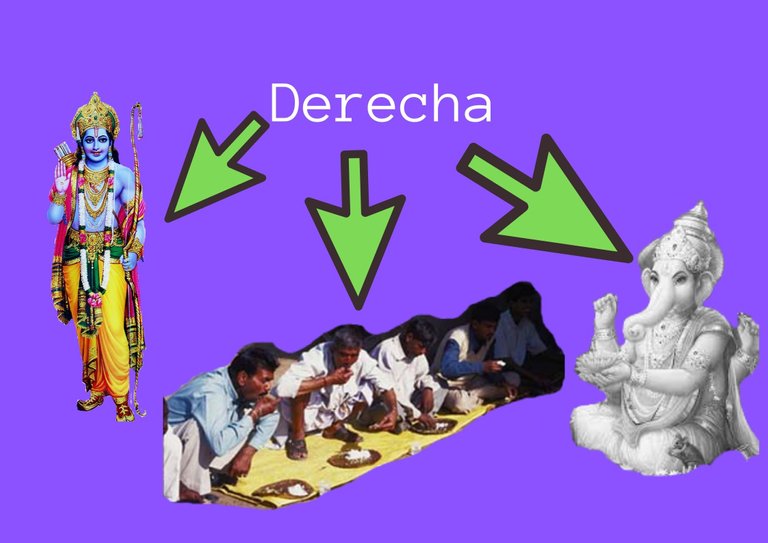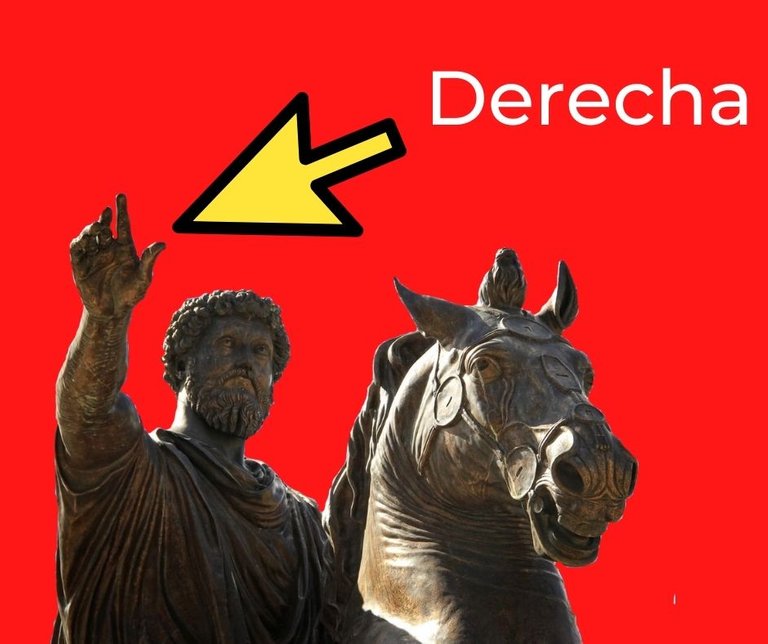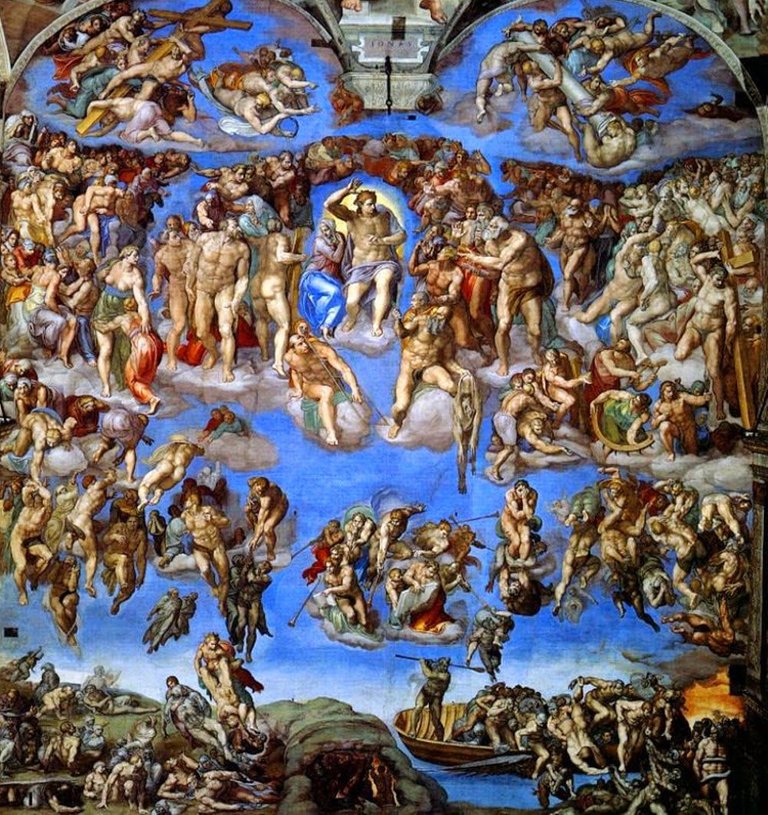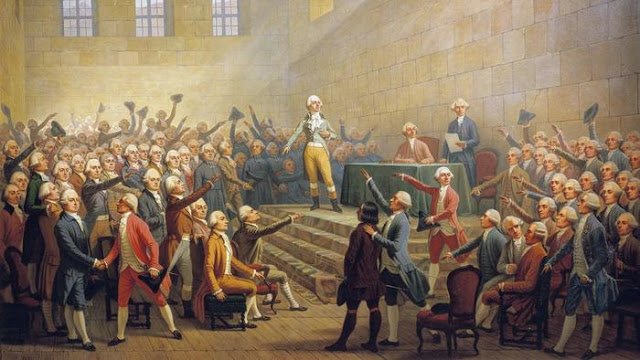Hello again everyone! Welcome to the first “official” post of my blog (the first one I don't know whether to consider it official, what do you say?). This time we will talk a little about political theory, why?
Because I feel like it
Because I want
And because I can xD
Porque me apetece
Porque quiero
Y porque puedo xD

The modern political world is plagued by all kinds of ideologies, which all they do is confuse people, since when someone says that this or that political party is from the left or from the right, the representatives of that party immediately dissociate themselves (From the mouth out, by the way), with the dark intention of simply getting votes.
For that reason it is extremely important that, to properly understand everything, we go to the roots of the terms associated with the different political tendencies (namely: left and right), and see the connotations that were given to each of them.
Of course, anyone who wants to know this is always going to find that the political origins of both definitions lie in the disastrous French Revolution (yes, I said DISASTROUS), and this is where a basic mistake is made: completely decontextualize the Research and not see beyond the obvious.
Why do I say that last? For the simple and simple reason that both terms, both 'left' and 'right', so associated with politics, have cultural and even religious origins within human history.
It is in this way that we can go back to ancient India, where we find the oldest references to the word "right", specifically in the Rig Veda, the term being a derivation of the root daks, daksina being the way of writing it, and that it means "to be useful", "to serve" or "to be worth", all positive meanings.
In the same way, the right hand in this same culture was used for numerous ritual acts, either because of its purity or because it is considered endowed with special power.
El mundo político moderno se encuentra plagado de toda clase de ideologías, que lo único que hacen es confundir a las personas, puesto que cuando alguien dice que tal o cual partido político es de izquierda o de derecha, los representantes de dicho partido inmediatamente se desvinculan (de la boca para afuera, dicho sea de paso), con la oscura intención de simplemente obtener votos.
Por esa razón es sumamente importante que, para entender adecuadamente todo, vayamos a las raíces de los términos asociados con las diferentes tendencias políticas (a saber: izquierda y derecha), y veamos las connotaciones que se le daban a cada uno de ellos.
Por supuesto, cualquiera que desee saber esto siempre se va a encontrar con que los orígenes políticos de ambas definiciones se encuentran en la nefasta Revolución Francesa (sí, dije NEFASTA), y es aquí donde se incurre en un error básico: descontextualizar por completo la investigación y no ver más allá de lo evidente.
¿Por qué digo eso último? Por la simple y sencilla razón de que ambos términos, tanto “izquierda” como “derecha”, tan asociados a la política, tienen orígenes culturales y hasta religiosos dentro de la historia humana.
Es de esta manera que podemos remontarnos hasta la antigua India, donde encontramos las referencias más antiguas a la palabra “derecha”, específicamente en el Rig Veda, siendo el término una derivación de la raíz daks, siendo daksina la forma de escribirlo, y que tiene por significado “ser útil”, “servir” o “valer”, todos significados positivos.
De igual forma, la mano derecha en esta misma cultura era usada para numerosos actos rituales, bien sea por su pureza o porque se la considera dotada de especial poderío.

From ancient India we went to the Sumer region, where the right was given a similar value over the left, this hand and by extension the arm being used to make their prayers, while they held it up, a custom that everyone will inherit. The peoples that inhabit the region.
From the Sumer region we pass to ancient Greece, where the great philosopher Aristotle, referring to the Pythagoreans, says that “they call good what is on the right, above, ahead; And bad to what is to the left, below and behind ”. Likewise, the stagirite says in his biological studies that the superiority of the right results from nature and man is natural to a higher degree than other animals.
Regarding Greek art, Méautis says that the right is the place of the victors and the lucky ones, while the left is the place of the defeated and those who are not pleasing to the gods.
Obviously, from Greece we went to Rome, where there are similar criteria for both sides, with the right hand the Roman salute is made, and like the Greeks, with the right hand it was with which the oath was taken; And in weddings, the spouses, to ensure the happiness of the union, turn the altar from left to right, to keep it always at their right hand.
De la antigua India pasamos a la región de Súmer, donde se le daba similar valoración a la derecha por sobre la izquierda, siendo usada esta mano y por extensión el brazo para hacer sus oraciones, mientras la mantenían en alto, una costumbre que heredarán todos los pueblos que habiten en la región.
De la región de Súmer pasamos a la antigua Grecia, donde el gran filósofo Aristóteles al referirse a los pitagóricos dice que “llaman bueno a lo que está a la derecha, arriba, adelante; y malo a lo que está a la izquierda, abajo y atrás”. Asimismo, el estagirita dice en sus estudios biológicos que la superioridad de la derecha resulta de la naturaleza y el hombre es natural en un grado más alto que los otros animales.
Al respecto del arte griego, Méautis dice que la derecha es el sitio de los vencedores y los afortunados, mientras la izquierda es el lugar de los derrotados y los que no son gratos a los dioses.
Obviamente, de Grecia pasamos a Roma, donde existen criterios similares para ambos lados, con la derecha se efectúa el saludo romano, y al igual que los griegos, con la mano derecha era con la que se prestaba juramento; y en los casamientos, los esposos, para asegurar la felicidad de la unión, dan vuelta al altar de izquierda a derecha, para mantenerlo siempre a su diestra.

We cannot ignore Christianity, of course. This is how we can appreciate in Mt. 25, 31 - 46 (for example) the description of the final judgment, where it is those placed to the right who are saved, while those on the left are condemned to eternal fire.
No podemos ignorar al cristianismo, por supuesto. Es así como podemos apreciar en Mt. 25, 31 – 46 (por ejemplo) la descripción del juicio final, donde son aquellos colocados hacia la derecha los que se salvan, mientras los de la izquierda son condenados al fuego eterno.

We can notice how, indeed, throughout history everything that is associated with the good and desirable is always related to the right side, while the bad and abhorrent is associated with the left.
And it is with this cultural conception that we arrive at the French Revolution, a point in history at which most historians place the political origins of both designations, claiming that said distribution was a mere chance, when we have checked with a few examples (These abound, I only placed those that seemed most relevant to me) that the connotations of the locations were well marked in the collective unconscious.
Unfortunately, it is impossible to determine without a doubt whether the location in the Constituent Assembly of 1792 was a mere chance or was really due to other reasons, the fact is that those who stood to the right (the Girondins) were the defenders of the monarch, while That the Jacobins, who were the opponents of the king, were located to the left.
Podemos notar como, efectivamente, a lo largo de la historia todo aquello que es asociado con lo bueno y deseable siempre es relacionado con el lado derecho, mientras que lo malo y aborrecible es asociado con la izquierda.
Y es con esta concepción cultural que llegamos hasta la revolución francesa, punto de la historia en la cual la mayoría de los historiadores sitúan los orígenes políticos de ambas designaciones, alegando que dicha distribución fue una mera casualidad, cuando hemos comprobado con unos pocos ejemplos (estos abundan, solo coloqué los que me parecieron más relevantes) que las connotaciones de las ubicaciones estaban bien marcadas en el inconsciente colectivo.
Lamentablemente es imposible determinar sin lugar a dudas si la ubicación en la Asamblea Constituyente de 1792 fue una mera casualidad o realmente obedecía a otras razones, el hecho es que aquellos que se ubicaron a la derecha (los girondinos) eran los defensores del monarca, mientras que los jacobinos, que eran los opositores al rey, se ubicaron a la izquierda.

I imagine that historians and apologists of the political left will also claim that the fact that the main promoters of 'The Reign of Terror' where more than 30 thousand people died unjustly (according to Donald Greer), have been the Jacobins, is a "Mere chance”.
And this is how we come to the end of this first part (because yes! It is the first part), I hope you have learned something, that you have been entertained and that you liked it.
If you liked it and wish there was a second part, let me know by liking and commenting.
Follow me so you are aware of my next posts.
I love you so much
Long life and prosperity
Me imagino que los historiadores y apologistas de la izquierda política también alegarán que el hecho de que los principales promotores de “El Reinado del Terror” donde murieron más de 30 mil personas injustamente (según Donald Greer), hayan sido los jacobinos, es una “mera casualidad”.
Y es así como llegamos al fin de esta primera parte (porque ¡sí! Es la primera parte), espero que hayan aprendido algo, que se hayan entretenido y les haya gustado.
Si les gustó y desearían que hubiese una segunda parte, déjenmelo saber dándole al like y comentándo.
Síganme para que estén al tanto de mis próximas publicaciones.
Los quiero mucho
Larga vida y prosperidad

God bless you
Dios me los bendiga

Congratulations @williamdb! You have completed the following achievement on the Hive blockchain and have been rewarded with new badge(s) :
Your next payout target is 50 HP.
The unit is Hive Power equivalent because your rewards can be split into HP and HBD
You can view your badges on your board and compare yourself to others in the Ranking
If you no longer want to receive notifications, reply to this comment with the word
STOPCheck out the last post from @hivebuzz:
Support the HiveBuzz project. Vote for our proposal!